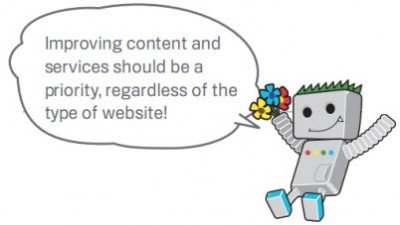It is common practice for Internet users to not click through pages and pages of search results, so where a site ranks in a search is essential for directing more traffic toward the site. Such search engine-directed traffic is called Organic Traffic and it is such traffic that helps the website go a long way! SEO helps to ensure that a site is accessible to a search engine and improves the chances that the site will be found by the search engine. The true definition of Search Engine Optimization (SEO) can be stated as a highly specialized process of building a successful website. We say successful because if a commercial website cannot be found in the major search engines, it is not successful, it just isn’t doing its job. SEO revolves around the following parameters: Microsoft offers a free website designing tool called WebMatrix which can be downloaded at no cost. It has an inbuilt tool to generate SEO reports, which I think all webmasters and bloggers should try out at least once for better results. Even if your site is not made via WebMatrix, then too you can use this tool.
Search Engine Optimization Starter Guide from Google
Google’s Search Engine Optimization Starter Guide first began as an effort to help teams within Google, but Google thought it’d be just as useful to webmasters that are new to the topic of search engine optimization and wish to improve their sites’ interaction with both users and search engines. Google has updated and released its Search Engine Optimization Starter Guide, which gives a lot of SEO tips to bloggers and webmasters to help improves SERP or search rankings.
Although this guide won’t tell you any secrets that’ll automatically rank your site first for queries in Google, following the best practices outlined below will make it easier for search engines to both crawl and index your content. Search engine optimization is often about making small modifications to parts of your website, and not being obsessed with implementing the so-called SEO tricks. Read: What is Google RankBrain. When viewed individually, these changes might seem like incremental improvements, but when combined with other optimizations, they could have a noticeable impact on your site’s user experience and performance in organic search results. You’re likely already familiar with many of the topics in this guide because they’re essential ingredients for any webpage, but you may not be making the most out of them. The contents of this UPDATED SEO Guide includes:
Improving Site StructureImprove the structure of your URLsCreate unique, accurate page titlesMake use of the “description” meta tagMake your site easier to navigateOptimizing ContentOffer quality content and servicesWrite better anchor textOptimize your use of imagesUse heading tags appropriatelyDealing with CrawlersMake effective use of robots.txtBe aware of rel=”nofollow” for linksSEO for Mobile PhonesNotify Google of mobile sitesGuide mobile users accuratelyPromotions and AnalysisPromote your website in the right waysMake use of free webmaster tools.
Download: The Search Engine Optimization Starter Guide in pdf format. (Link updated to point to latest version) Read next: Useful tips for new bloggers.
